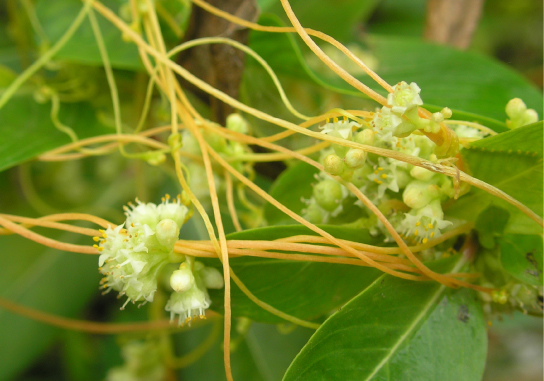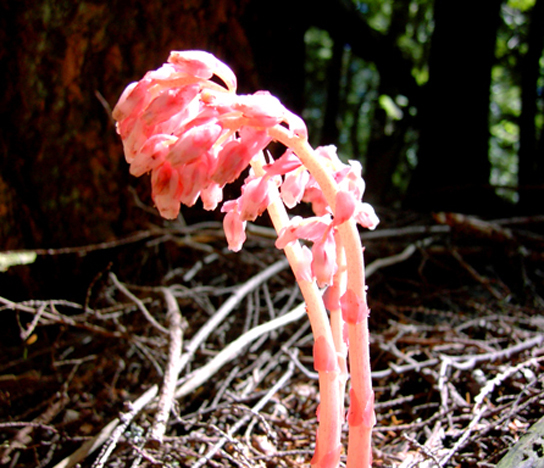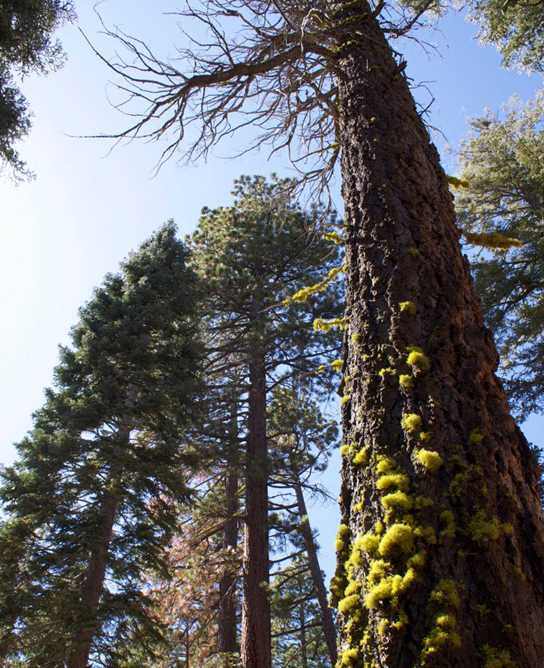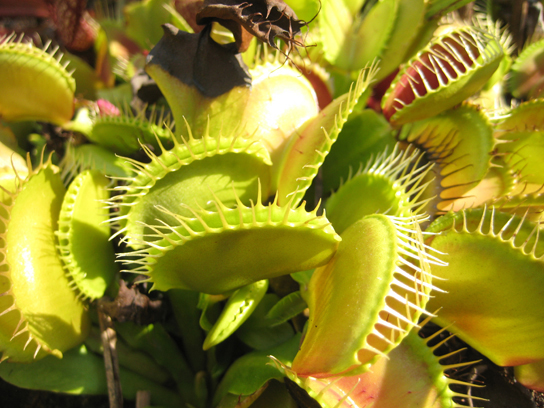31.3C: Nutrients from Other Sources
- Page ID
- 13793
\( \newcommand{\vecs}[1]{\overset { \scriptstyle \rightharpoonup} {\mathbf{#1}} } \)
\( \newcommand{\vecd}[1]{\overset{-\!-\!\rightharpoonup}{\vphantom{a}\smash {#1}}} \)
\( \newcommand{\id}{\mathrm{id}}\) \( \newcommand{\Span}{\mathrm{span}}\)
( \newcommand{\kernel}{\mathrm{null}\,}\) \( \newcommand{\range}{\mathrm{range}\,}\)
\( \newcommand{\RealPart}{\mathrm{Re}}\) \( \newcommand{\ImaginaryPart}{\mathrm{Im}}\)
\( \newcommand{\Argument}{\mathrm{Arg}}\) \( \newcommand{\norm}[1]{\| #1 \|}\)
\( \newcommand{\inner}[2]{\langle #1, #2 \rangle}\)
\( \newcommand{\Span}{\mathrm{span}}\)
\( \newcommand{\id}{\mathrm{id}}\)
\( \newcommand{\Span}{\mathrm{span}}\)
\( \newcommand{\kernel}{\mathrm{null}\,}\)
\( \newcommand{\range}{\mathrm{range}\,}\)
\( \newcommand{\RealPart}{\mathrm{Re}}\)
\( \newcommand{\ImaginaryPart}{\mathrm{Im}}\)
\( \newcommand{\Argument}{\mathrm{Arg}}\)
\( \newcommand{\norm}[1]{\| #1 \|}\)
\( \newcommand{\inner}[2]{\langle #1, #2 \rangle}\)
\( \newcommand{\Span}{\mathrm{span}}\) \( \newcommand{\AA}{\unicode[.8,0]{x212B}}\)
\( \newcommand{\vectorA}[1]{\vec{#1}} % arrow\)
\( \newcommand{\vectorAt}[1]{\vec{\text{#1}}} % arrow\)
\( \newcommand{\vectorB}[1]{\overset { \scriptstyle \rightharpoonup} {\mathbf{#1}} } \)
\( \newcommand{\vectorC}[1]{\textbf{#1}} \)
\( \newcommand{\vectorD}[1]{\overrightarrow{#1}} \)
\( \newcommand{\vectorDt}[1]{\overrightarrow{\text{#1}}} \)
\( \newcommand{\vectE}[1]{\overset{-\!-\!\rightharpoonup}{\vphantom{a}\smash{\mathbf {#1}}}} \)
\( \newcommand{\vecs}[1]{\overset { \scriptstyle \rightharpoonup} {\mathbf{#1}} } \)
\( \newcommand{\vecd}[1]{\overset{-\!-\!\rightharpoonup}{\vphantom{a}\smash {#1}}} \)
\(\newcommand{\avec}{\mathbf a}\) \(\newcommand{\bvec}{\mathbf b}\) \(\newcommand{\cvec}{\mathbf c}\) \(\newcommand{\dvec}{\mathbf d}\) \(\newcommand{\dtil}{\widetilde{\mathbf d}}\) \(\newcommand{\evec}{\mathbf e}\) \(\newcommand{\fvec}{\mathbf f}\) \(\newcommand{\nvec}{\mathbf n}\) \(\newcommand{\pvec}{\mathbf p}\) \(\newcommand{\qvec}{\mathbf q}\) \(\newcommand{\svec}{\mathbf s}\) \(\newcommand{\tvec}{\mathbf t}\) \(\newcommand{\uvec}{\mathbf u}\) \(\newcommand{\vvec}{\mathbf v}\) \(\newcommand{\wvec}{\mathbf w}\) \(\newcommand{\xvec}{\mathbf x}\) \(\newcommand{\yvec}{\mathbf y}\) \(\newcommand{\zvec}{\mathbf z}\) \(\newcommand{\rvec}{\mathbf r}\) \(\newcommand{\mvec}{\mathbf m}\) \(\newcommand{\zerovec}{\mathbf 0}\) \(\newcommand{\onevec}{\mathbf 1}\) \(\newcommand{\real}{\mathbb R}\) \(\newcommand{\twovec}[2]{\left[\begin{array}{r}#1 \\ #2 \end{array}\right]}\) \(\newcommand{\ctwovec}[2]{\left[\begin{array}{c}#1 \\ #2 \end{array}\right]}\) \(\newcommand{\threevec}[3]{\left[\begin{array}{r}#1 \\ #2 \\ #3 \end{array}\right]}\) \(\newcommand{\cthreevec}[3]{\left[\begin{array}{c}#1 \\ #2 \\ #3 \end{array}\right]}\) \(\newcommand{\fourvec}[4]{\left[\begin{array}{r}#1 \\ #2 \\ #3 \\ #4 \end{array}\right]}\) \(\newcommand{\cfourvec}[4]{\left[\begin{array}{c}#1 \\ #2 \\ #3 \\ #4 \end{array}\right]}\) \(\newcommand{\fivevec}[5]{\left[\begin{array}{r}#1 \\ #2 \\ #3 \\ #4 \\ #5 \\ \end{array}\right]}\) \(\newcommand{\cfivevec}[5]{\left[\begin{array}{c}#1 \\ #2 \\ #3 \\ #4 \\ #5 \\ \end{array}\right]}\) \(\newcommand{\mattwo}[4]{\left[\begin{array}{rr}#1 \amp #2 \\ #3 \amp #4 \\ \end{array}\right]}\) \(\newcommand{\laspan}[1]{\text{Span}\{#1\}}\) \(\newcommand{\bcal}{\cal B}\) \(\newcommand{\ccal}{\cal C}\) \(\newcommand{\scal}{\cal S}\) \(\newcommand{\wcal}{\cal W}\) \(\newcommand{\ecal}{\cal E}\) \(\newcommand{\coords}[2]{\left\{#1\right\}_{#2}}\) \(\newcommand{\gray}[1]{\color{gray}{#1}}\) \(\newcommand{\lgray}[1]{\color{lightgray}{#1}}\) \(\newcommand{\rank}{\operatorname{rank}}\) \(\newcommand{\row}{\text{Row}}\) \(\newcommand{\col}{\text{Col}}\) \(\renewcommand{\row}{\text{Row}}\) \(\newcommand{\nul}{\text{Nul}}\) \(\newcommand{\var}{\text{Var}}\) \(\newcommand{\corr}{\text{corr}}\) \(\newcommand{\len}[1]{\left|#1\right|}\) \(\newcommand{\bbar}{\overline{\bvec}}\) \(\newcommand{\bhat}{\widehat{\bvec}}\) \(\newcommand{\bperp}{\bvec^\perp}\) \(\newcommand{\xhat}{\widehat{\xvec}}\) \(\newcommand{\vhat}{\widehat{\vvec}}\) \(\newcommand{\uhat}{\widehat{\uvec}}\) \(\newcommand{\what}{\widehat{\wvec}}\) \(\newcommand{\Sighat}{\widehat{\Sigma}}\) \(\newcommand{\lt}{<}\) \(\newcommand{\gt}{>}\) \(\newcommand{\amp}{&}\) \(\definecolor{fillinmathshade}{gray}{0.9}\)- Differentiate among the sources of plant nutrition
Nutrients from Other Sources
Some plants cannot produce their own food and must obtain their nutrition from outside sources. This may occur with plants that are parasitic or saprophytic: ingesting and utilizing dead matter as a food source. In other cases, plants may be mutualistic symbionts, epiphytes, or insectivorous.
Plant Parasites
A parasitic plant depends on its host for survival. Some parasitic plants have no leaves. An example of this is the dodder, which has a weak, cylindrical stem that coils around the host and forms suckers. From these suckers, cells invade the host stem and grow to connect with the vascular bundles of the host. The parasitic plant obtains water and nutrients through these connections. The plant is a total parasite (a holoparasite) because it is completely dependent on its host. Other parasitic plants, called hemiparasites, are fully photosynthetic and only use the host for water and minerals. There are about 4,100 species of parasitic plants.

Saprophytes
A saprophyte is a plant that does not have chlorophyll, obtaining its food from dead matter, similar to bacteria and fungi. (Note that fungi are often called saprophytes, which is incorrect, because fungi are not plants). Plants such as these use enzymes to convert organic food materials into simpler forms from which they can absorb nutrients. Most saprophytes do not directly digest dead matter. Instead, they parasitize mycorrhizae or other fungi that digest dead matter, ultimately obtaining photosynthate from a fungus that derived photosynthate from its host. Saprophytic plants are uncommon with only a few, described species.

Symbionts
A symbiont is a plant in a symbiotic relationship with other organisms, such as mycorrhizae (with fungi) or nodule formation. Root nodules occur on plant roots (primarily Fabaceae) that associate with symbiotic, nitrogen-fixing bacteria. Under nitrogen-limiting conditions, capable plants form a symbiotic relationship with a host-specific strain of bacteria known as rhizobia. Within legume nodules, nitrogen gas from the atmosphere is converted into ammonia, which is then assimilated into amino acids (the building blocks of proteins), nucleotides (the building blocks of DNA and RNA, as well as the important energy molecule ATP), and other cellular constituents such as vitamins, flavones, and hormones.
Fungi also form symbiotic associations with cyanobacteria and green algae; the resulting symbiotic organism is called a lichen. Lichens can sometimes be seen as colorful growths on the surface of rocks and trees. The algal partner (phyco- or photobiont) makes food autotrophically, some of which it shares with the fungus; the fungal partner (mycobiont) absorbs water and minerals from the environment, which are made available to the green alga. If one partner was separated from the other, they would both die.

Epiphytes
An epiphyte is a plant that grows on other plants, but is not dependent upon the other plant for nutrition; it is non-parasitic. The epiphyte derives its moisture and nutrients from the air, rain, and sometimes from debris accumulating around it instead of from the structure to which it is fastened. Epiphytes have two types of roots: clinging aerial roots (which absorb nutrients from humus that accumulates in the crevices of trees) and aerial roots (which absorb moisture from the atmosphere).
Insectivorous Plants
An insectivorous plant has specialized leaves to attract and digest insects. The Venus flytrap is popularly known for its insectivorous mode of nutrition and has leaves that work as traps. The minerals it obtains from prey compensate for those lacking in the boggy (low pH) soil of its native North Carolina coastal plains. There are three sensitive hairs in the center of each half of each leaf. The edges of each leaf are covered with long spines. Nectar secreted by the plant attracts flies to the leaf. When a fly touches the sensory hairs, the leaf immediately closes. Fluids and enzymes then break down the prey and minerals are absorbed by the leaf. Since this plant is popular in the horticultural trade, it is threatened in its original habitat.

Key Points
- Some plants are parasites, which acquire all of some of their nutrients from another host plant and are, therefore, entirely dependent upon it for their survival.
- Saprophytes acquire nutrients from dead matter, using enzymes to convert complex organic compounds into simpler forms from which the plant can absorb nutrients.
- A symbiont experiences a mutually-beneficial arrangement with a plant; both partners contribute necessary nutrients to the other.
- An epiphyte is a plant that grows on other plants, but is not dependent upon the other plant for nutrition; instead, it uses the other plant for physical support.
- Insectivorous plants have special adapatations for attracting and trapping insects, which they use to supplement their own nutrients, depleted in the surrounding soil.
Key Terms
- photosynthate: any compound that is a product of photosynthesis
- photobiont: a photosynthetic symbiont
- mycobiont: the fungus that is a component of a lichen
- saprophyte: any organism that lives on dead organic matter, as certain fungi and bacteria
- epiphyte: a plant that grows on another, using it as a physical support but neither obtaining nutrients from it nor causing it any damage if also offering no benefit
- insectivorous: capable of trapping and absorbing insects; such as the sundew, pitcher plant and Venus flytrap
Contributions and Attributions
- OpenStax College, Biology. October 17, 2013. Provided by: OpenStax CNX. Located at: http://cnx.org/content/m44718/latest/?collection=col11448/latest. License: CC BY: Attribution
- nodule. Provided by: Wikipedia. Located at: en.Wikipedia.org/wiki/nodule. License: CC BY-SA: Attribution-ShareAlike
- rhizobia. Provided by: Wiktionary. Located at: en.wiktionary.org/wiki/rhizobia. License: CC BY-SA: Attribution-ShareAlike
- nitrogen fixation. Provided by: Wiktionary. Located at: en.wiktionary.org/wiki/nitrogen_fixation. License: CC BY-SA: Attribution-ShareAlike
- Nitrogen Cycle. Provided by: Wikipedia. Located at: en.Wikipedia.org/wiki/File:Nitrogen_Cycle.svg. License: CC BY-SA: Attribution-ShareAlike
- OpenStax College, Nutritional Adaptations of Plants. October 17, 2013. Provided by: OpenStax CNX. Located at: http://cnx.org/content/m44718/latest/Figure_31_03_01abc.png. License: CC BY: Attribution
- OpenStax College, Nutritional Adaptations of Plants. October 17, 2013. Provided by: OpenStax CNX. Located at: http://cnx.org/content/m44718/latest/Figure_31_03_02ab.jpg. License: CC BY: Attribution
- OpenStax College, Biology. October 17, 2013. Provided by: OpenStax CNX. Located at: http://cnx.org/content/m44718/latest/?collection=col11448/latest. License: CC BY: Attribution
- Mycorrhiza. Provided by: Wikipedia. Located at: en.Wikipedia.org/wiki/Mycorrhiza. License: CC BY-SA: Attribution-ShareAlike
- mycorrhiza. Provided by: Wikipedia. Located at: en.Wikipedia.org/wiki/mycorrhiza. License: CC BY-SA: Attribution-ShareAlike
- hypha. Provided by: Wikipedia. Located at: en.Wikipedia.org/wiki/hypha. License: CC BY-SA: Attribution-ShareAlike
- mycelium. Provided by: Wiktionary. Located at: en.wiktionary.org/wiki/mycelium. License: CC BY-SA: Attribution-ShareAlike
- Nitrogen Cycle. Provided by: Wikipedia. Located at: en.Wikipedia.org/wiki/File:Nitrogen_Cycle.svg. License: CC BY-SA: Attribution-ShareAlike
- OpenStax College, Nutritional Adaptations of Plants. October 17, 2013. Provided by: OpenStax CNX. Located at: http://cnx.org/content/m44718/latest/Figure_31_03_01abc.png. License: CC BY: Attribution
- OpenStax College, Nutritional Adaptations of Plants. October 17, 2013. Provided by: OpenStax CNX. Located at: http://cnx.org/content/m44718/latest/Figure_31_03_02ab.jpg. License: CC BY: Attribution
- Ectomycorrhizae 001. Provided by: Wikimedia. Located at: commons.wikimedia.org/wiki/File:Ectomycorrhizae_001.jpg. License: CC BY-SA: Attribution-ShareAlike
- OpenStax College, Nutritional Adaptations of Plants. October 17, 2013. Provided by: OpenStax CNX. Located at: http://cnx.org/content/m44718/latest...e_31_03_03.jpg. License: CC BY: Attribution
- OpenStax College, Biology. October 17, 2013. Provided by: OpenStax CNX. Located at: http://cnx.org/content/m44718/latest/?collection=col11448/latest. License: CC BY: Attribution
- OpenStax College, Biology. October 23, 2013. Provided by: OpenStax CNX. Located at: http://cnx.org/content/m44718/latest/?collection=col11448/latest. License: CC BY: Attribution
- Lichen. Provided by: Wikipedia. Located at: en.Wikipedia.org/wiki/Lichen. License: CC BY-SA: Attribution-ShareAlike
- Root nodule. Provided by: Wikipedia. Located at: en.Wikipedia.org/wiki/Root_nodule. License: CC BY-SA: Attribution-ShareAlike
- mycobiont. Provided by: Wiktionary. Located at: en.wiktionary.org/wiki/mycobiont. License: CC BY-SA: Attribution-ShareAlike
- insectivorous. Provided by: Wiktionary. Located at: en.wiktionary.org/wiki/insectivorous. License: CC BY-SA: Attribution-ShareAlike
- photobiont. Provided by: Wiktionary. Located at: en.wiktionary.org/wiki/photobiont. License: CC BY-SA: Attribution-ShareAlike
- epiphyte. Provided by: Wiktionary. Located at: en.wiktionary.org/wiki/epiphyte. License: CC BY-SA: Attribution-ShareAlike
- photosynthate. Provided by: Wiktionary. Located at: en.wiktionary.org/wiki/photosynthate. License: CC BY-SA: Attribution-ShareAlike
- saprophyte. Provided by: Wiktionary. Located at: en.wiktionary.org/wiki/saprophyte. License: CC BY-SA: Attribution-ShareAlike
- Nitrogen Cycle. Provided by: Wikipedia. Located at: en.Wikipedia.org/wiki/File:Nitrogen_Cycle.svg. License: CC BY-SA: Attribution-ShareAlike
- OpenStax College, Nutritional Adaptations of Plants. October 17, 2013. Provided by: OpenStax CNX. Located at: http://cnx.org/content/m44718/latest/Figure_31_03_01abc.png. License: CC BY: Attribution
- OpenStax College, Nutritional Adaptations of Plants. October 17, 2013. Provided by: OpenStax CNX. Located at: http://cnx.org/content/m44718/latest/Figure_31_03_02ab.jpg. License: CC BY: Attribution
- Ectomycorrhizae 001. Provided by: Wikimedia. Located at: commons.wikimedia.org/wiki/File:Ectomycorrhizae_001.jpg. License: CC BY-SA: Attribution-ShareAlike
- OpenStax College, Nutritional Adaptations of Plants. October 17, 2013. Provided by: OpenStax CNX. Located at: http://cnx.org/content/m44718/latest/Figure_31_03_03.jpg. License: CC BY: Attribution
- OpenStax College, Nutritional Adaptations of Plants. October 17, 2013. Provided by: OpenStax CNX. Located at: http://cnx.org/content/m44718/latest...e_31_03_05.jpg. License: CC BY: Attribution
- OpenStax College, Nutritional Adaptations of Plants. October 17, 2013. Provided by: OpenStax CNX. Located at: http://cnx.org/content/m44718/latest...e_31_03_06.jpg. License: CC BY: Attribution
- OpenStax College, Nutritional Adaptations of Plants. October 17, 2013. Provided by: OpenStax CNX. Located at: http://cnx.org/content/m44718/latest...e_31_03_04.jpg. License: CC BY: Attribution
- OpenStax College, Nutritional Adaptations of Plants. October 17, 2013. Provided by: OpenStax CNX. Located at: http://cnx.org/content/m44718/latest...e_31_03_08.jpg. License: CC BY: Attribution


